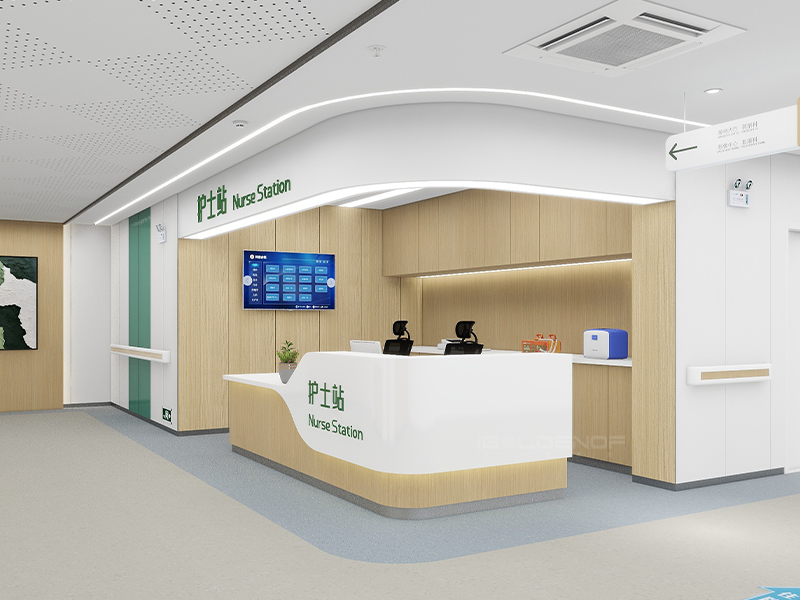Hospital Nurse Station Counter: The Heart of Medical Communication and Care
The hospital nurse station counter is the operational core of any ward or department. It serves as a central point for medical staff to coordinate care, manage patient information, and interface with visitors. A well-designed nurse station counter enhances workflow efficiency, supports infection control, and creates a welcoming environment for patients and families.
Key Functions of the Nurse Station Counter
Central Communication Hub: Nurses, doctors, and support staff use the counter to share information, coordinate care, and manage emergencies.
Patient and Family Interaction: The counter is the first stop for patient inquiries, admissions, and guidance.
Documentation Center: Medical records, charts, and electronic health systems are managed and updated here.
Medication Preparation: Secure areas and work surfaces support medication handling and administration.
Workflow Management: Supervises patient traffic and supports administrative tasks.
Design Features of an Effective Nurse Station Counter
1. Ergonomics and Workflow
The counter should offer comfortable working heights, accessible surfaces, and logical zones for different tasks (reception, documentation, medication, etc.). Ergonomic design minimizes fatigue and supports long shifts.
2. Storage and Organization
Ample drawers, cabinets, and shelves keep supplies, documents, and medication organized. Lockable storage areas are essential for controlled substances and confidential files.
3. Technology Integration
Modern nurse stations need integrated power outlets, data ports, cable management, and space for computers, phones, and printers to support digital health systems.
4. Hygiene and Durability
Use of medical-grade materials—such as antibacterial laminates or stainless steel—ensures surfaces are easy to clean, disinfect, and able to withstand frequent use.
5. Visibility and Accessibility
A good nurse station counter design allows clear sightlines for monitoring patient areas, while being easily accessible to staff, patients, and families (including those with disabilities).
6. Privacy and Security
Raised partitions, privacy glass, or separate transaction counters can protect sensitive conversations and confidential information.
Popular Nurse Station Counter Configurations
Circular/U-shaped Counters: Allow 360-degree workflow and team collaboration.
L-shaped Counters: Make the most of corner spaces and create distinct work areas.
Linear Counters: Best for narrow corridors or small wards.
Modular Counters: Can be customized or expanded as department needs change.
Tips for Selecting a Hospital Nurse Station Counter
Assess Department Needs: Consider the number of staff, workflow, and patient volume.
Prioritize Hygiene: Choose surfaces and finishes that are easy to disinfect.
Plan for Technology: Ensure enough outlets and data connections for modern equipment.
Focus on Storage: Provide sufficient, secure storage for documents and medication.
Support Accessibility: Design for ADA compliance and universal access.
Conclusion
An efficient, well-designed hospital nurse station counter is essential for seamless communication, safe patient care, and a professional hospital image. Investing in quality materials, ergonomic layouts, and smart storage solutions will benefit both staff and patients for years to come.
Looking for custom hospital nurse station counters? Contact us for tailored designs and expert advice!
